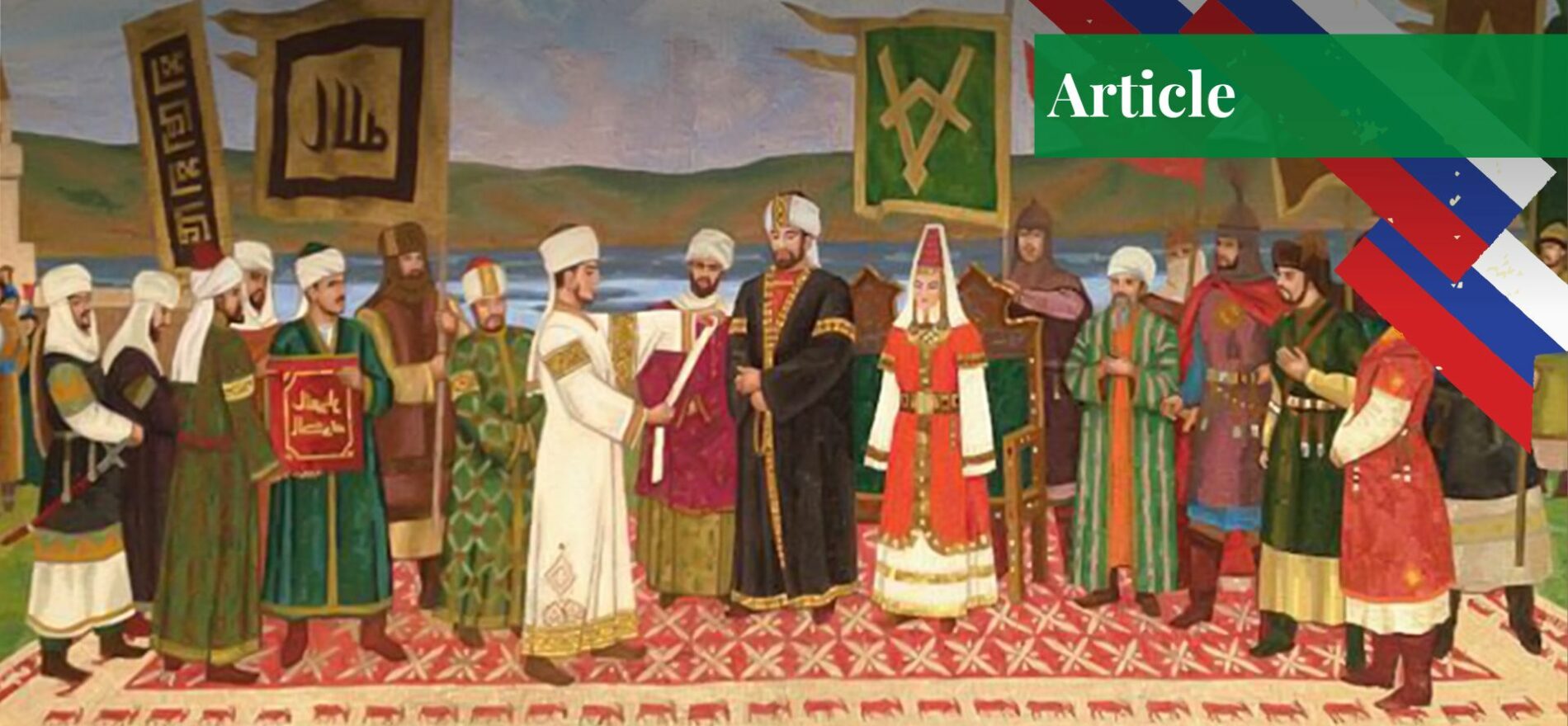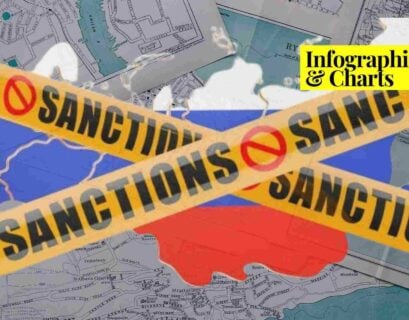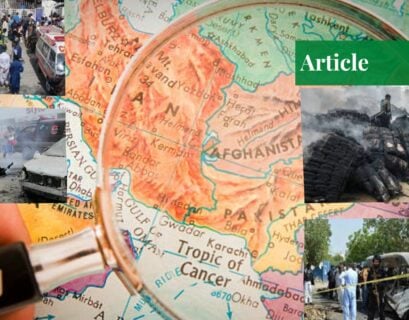Ms Fatimah Naeem is pursuing her Bachelor's in Peace and Conflict Studies from National Defence University Islamabad.
Introduction
The vibrant tapestry of modern society has been tailored to the evolving political, religious, economic, cultural, linguistic, and social prospects. With the changing dynamics of relationships and interactions across the globe, a closer analysis to maximize its understanding and sustenance poses an endeavor of unexplored horizons. Keeping this in mind, one can investigate the consolidation of Islam into the landscape of Russia. With a rich history filled with conflicts and incursions, ethnoreligious diversifications, and sociopolitical interests, Kremlin affairs have been nothing short of vigorous.
Tracing the Origins of Islam in Russia
The historical pretext of Islam’s integration into Russia can be traced back to the 7th century, when Abd Al-Rehman Ibn Rebia, with his Muslim cavalry, penetrated the southeast Caucasus shortly after conquering Iran and Jerusalem. In the 8th century, after facing a crushing defeat at the hands of the Umayyad caliphate, the Khazar Khanate lost its dominance over the North Caucasus.
The constantly evolving demographic enterprise led to Moscow coming in contact with Islam during the 10th century. Trade and commerce with the Muslim merchants gave way to European Russians becoming familiar with the Islamic ways of life, as the religion gradually settled itself near the Volga River. Life began to take a picture on the Volga basins as Islam spread rapidly into the social, ethnic, cultural, and linguistic trajectory of the Volga-Ural regions, most notably in modern-day Tatarstan.
Fast forward to the 15th century, and a plethora of independent Muslim Khanates had emerged in what is now modern-day Russia. However, Russian secularism was dominant in Moscow and Kyiv, ultimately challenging the traditional popularity of religious proponents. In the 16th century, the Tsar regime was successful in conquering Kazan (a Muslim-dominant region in Russia) and was able to confiscate the freedom of all Islamic subjects.
Hope resurfaced once Catherine the Great assumed the throne of the Russian Empire in 1762. She understood the complex nature of the religious dilemma between her Christian and Muslim subjects, promoting the abolishment of traditional Tsarist Russian policies to effectively govern the Muslim counterparts. This approach led to the establishment of the Orenburg Islamic Court in 1788. The court, headed by muftiates, played the role of providing a platform where communication between Russia’s Muslims and their Tsarist rulers could take place.

Even though efforts were made to eradicate grievances held by the Russian Muslim communities, the moderate oppression against them further fueled the anti-Tsar rhetoric. Consequentially, a large number of these Muslims, belonging to Caucasian and Circassian descent, joined the Ottoman Empire upon the relocation policy introduced by the Tsarist regime. This mass migration is also known as the Circassian Exodus of 1864.
Eventually, the downfall of the Tsar regime, especially after the Russo-Japanese War of 1904–1905, was perceived as an opportunity not just among Muslim communities but also among numerous other discriminated segments of Russian society. Numerous political organizations galvanized momentum and gained traction in Russian scenes. Demanding revisionist policies, the newly-emerged Bolsheviks, led by Lenin, built a dialogue with the Muslims, promising rights and administrative positions.
The Interplay of Early Communism and Islam
After overthrowing the Tsarist regime, Lenin-led Bolsheviks emerged as the authoritative communist power over Russia. Despite promises of empathy, the Muslims of Russia had to face several reforms and sanctions, including changing the alphabet to destroy the Muslim language, religion, culture, and traditions. In an attempt to reduce linguistic familiarity, the Bolsheviks even forced different renditions of the Cyrillic alphabet on numerous Muslim Turkic people residing within the USSR.

Later on, in 1922, the Stalinist regime gained traction, following the death of Lenin. Unlike Lenin’s communism, the Stalinist ideological interpretation of communism was much more extreme. Rendering religion as a hindrance in the way of communist prosperity, the dictator committed heinous atrocities such as closing religious schools, burning the Quran, demolition of 30,000 mosques, and burning libraries filled with vital Islamic knowledge, to name a few. Stalin strictly imposed the policy of state atheism.
Following the onslaught of WWII, the followers of Islam residing in the southwestern part of the communist territory were forced to abandon their land. These Muslims included Chechens, Crimean Tatars, Balkars, etc. By 1944, the relocation had forcibly expelled approximately 600,000 southwestern Russian Muslims out of their homeland and into territories of Uzbekistan, Kazakhstan, Mari El, and other vicinities of Soviet Russia.
Russian Muslims and Post-Soviet Russian Policies on Islam
In 1991, followed by 74 years of oppression and suffering at the hands of communism, Russia’s Muslim and other religious minority groups were finally granted the freedom to practice their beliefs freely. The formerly declining Muslim population saw a rise after the 1990s. Having ties cut off from religion, many ethnic Russians either resumed their Christian identity or turned to Islam. As Islam became more integrated into the society of Russia, the number of Muslims within the state rose to 25 million, with the number of mosques increasing from 500 to 5,000.
In present-day Russia, the majority of Muslims observe Sunni Islam and follow local Islamic Sufi orders. Collaborating with the regional administration, Sufis are supported by the Russian state itself. The ambiguous nature of the administrative system has caused an upheaval among many Sunni subjects. Why? The Soviets conducted special measures to control the Sunni-majority Caucasus region by appointing a supervisor belonging to Shiite sheikh al-Islam. The pleasant relations between the Russian government and the Shiite sheikh al-Islam opened up new bottlenecks of tension and grievances among the Sunni population.
Another dimension of a conflicting atmosphere had been induced due to the refusal of many Muslim groups to be governed by a non-Muslim administration. The Kremlin state saw these groups as a minuscule threat to Russian secularist ideologies. Russia has no issue with the Islamic ideology, if it falls within its temporal government framework, but the immense support for Shiite sheikh al-Islam puts the Sunni demography on a pedestal against the clientelism favoring Shias.
Furthermore, towards the North Caucasus, Salafi groups, particularly the Chechens, were perceived as a threat. Wahhabi and Salafi ideologies are believed to severely contradict the Russian objective of combating the War on Terror. Interestingly, post-Cold War, the Kremlin government sympathized fairly well with its Shia counterparts to combat America’s support for the Sunni world. The Shia-Sunni tensions have been nothing but an exploitative tool for global powers to pursue their regional interests.
The Chechen-Russian Conflict
After the collapse of the Soviet Union in the early 1990s, new states emerged in central Asia. Animosity was brewing in the southwestern region as Chechnya saw growing support for the anti-Soviet revolution, which consequentially led to the unilateral recognition of the Chechen Republic of Ichkeria. Formerly known as the Chechen-Ingush Autonomous Soviet Socialist Republic, leaders from both Chechnya and Ingushetia came to an agreement in 1992 that included splitting the two states. Ingushetia had integrated into the Russian Federation, while Chechnya retained its autonomous character.
Russia’s bitter sentiments over Chechnya’s independent status led to the First Chechen War in 1994, where the Russian Federation took covert measures to expel Dzhokhar Dudayev’s government and restore the constitutional order of Russia’s hegemony over the region. The conflict lasted for two years, inflicting a heavy loss of human life, with casualties exceeding 50,000. The violence had spiraled out of control with various actors, including the Chechen separatist groups, who had been in a tug-of-war with Russian forces in an attempt to siege Grozny.

On August 22, 1996, Russia’s Security Council Secretary Aleksandr Lebed and the Chief of Staff of the Chechen Forces Aslan Mashkadov, decided to draft a nine-point ceasefire agreement, known as the Khasav-Yurt Accord, that would give way to the peaceful withdrawal of forces on both fronts and form a bilateral platform of communication. Even though the nature of the consensus was optimistic, there were many gaps left to assumptions and misinterpretations.
From 1997 to 1999, former allies of Mashkadov, sensing a discordant turn of events, toppled his government. Shamil Basayev and his rebel forces turned Chechnya into a state governed according to Islamic law. Following a plethora of skirmishes between the Russian military and the Chechen separatist militants, the onslaught galvanized momentum during the beginning of the new millennium.
A series of bombings in Dagestan marked the beginning of the Second Chechen War. The Chechen invasion of Dagestan was characterized by Russian aerial bombardment and approximately 100,000 Chechens engaging in mass exodus towards neighboring Ingushetia. After assuming office on October 1st, 1999, Prime Minister Vladimir Putin ordered the Kremlin cavalry to teach the Chechen separatist militants an entrenched lesson of Russian resistance to Chechen Islamic autonomy. Following months of successful Russian infiltration, Chechnya was finally under the direct rule of Russia in May 2000.
Putin appointed pro-Russian Chechen leader Akhmand Kadyrov as the interim head. Later on, in March 2003, following the results of a referendum, Chechnya had been granted considerable autonomy but still functioned under the Kremlin hegemony, restoring the compromised federal government.
The war, even though sluggish in nature, witnessed guerilla tactics and assassination attempts from the Chechen side and counter-insurgency operations from the Russian side. The war saw an end in 2009 with a Russian victory, even though low-level Chechen insurgency persisted till 2017. In the wake of territorial changes, Chechnya was reincorporated into the Russian Federation.
The Unfortunate Backlash from Russian Society
Structural violence against Muslims in Russia has been a prevalent prospect that has affected millions of Muslims in terms of education, employment, political rights, and, to a certain degree, the flexibility to practice religion. With a 170% rise in Muslim birth rate, the population rate has been in a downward spiral for ethnic Russians and followers of Orthodox Christianity.
Another factor that endangers the Russian secularist agenda is the influx of refugees from neighboring Uzbekistan, Tajikistan, and Azerbaijan. In search of a better life, these refugees are more prone to structural violence and deep-rooted systemic discrimination. Moreover, their “illegal” status poses a hindrance in documenting cases of Islamophobia.
Over the years, Islam in Russia has appeared in different forms, such as the Euro-Islam approach of the Tatars, Sufism in the Caucasus, and the popularity of radical Salafist ideologies among Chechen youth. Russia’s priorities regarding religious aspects have always favored Christian Orthodox approaches but the same can’t be said for Islam.
Since the religion first entered the region, Russia has always expected scholars to interpret Islam in a way that would fit perfectly within the state’s interests. In addition, Russia’s climate and geography continue to strongly influence the everyday life of Muslims living in the country.
Characterizing Islam in Russia Today
By inculcating the aspect of “securitization,” it is portrayed that already in the 1990s, amid military conflict in the Caucasus, the Russian state adopted legislation that began restricting religious freedoms. Especially after 9/11 and multiple terrorist attacks in Russia, the fear of Islamic radicalism came to dominate public policies toward Muslims. This trend has resulted in increased state surveillance of Muslim religious communities and institutions, the prohibition of certain religious literature, and the banning of religious groups deemed extremist in nature.
Coupled with political securitization are instances of Islamophobia manifested in negative and essentialized perceptions of Muslims. Recent surveys indicate that violence against people with Muslim backgrounds ranges from 30% to 60% of all ethnic violence and acts of vandalism are regularly committed against Muslim buildings. Adopting the “Churchification” model in trying to govern a highly diverse Muslim community, the Russian state continues to impose models cultivated in relations with the Russian Orthodox Church.
The strategy involves not only the administrative organization of Muslim parishes and the appointment of the clergy but also the language that is used to express and talk about Islam. As Russian became the new Muslim lingua franca, the church and muftiates converged on linguistic and symbolic levels. The muftiates also follow the path forged by the ROC (Russian Orthodox Church) in gradually challenging the secular principles of the Russian state. The Muslim leaders participate in endorsing the state’s conservative agenda both at home and abroad.
Lastly, with the “urbanization” of the Muslim population, Russia’s cities have been transforming to accommodate the increasing needs of these communities. Halal restaurants, shops, and clinics are well integrated into the fabric of megalopolises. There are new Islam-themed events and interest clubs. Muslims have their own fashion shows, newspapers, and even specialized business and psychological coaches who operate in observance of religious prescriptions. This new infrastructure in turn engenders novel practices and results in creative interplays between Islamic tradition and modern innovations.
Conclusion
Many global transformations that strongly affect the Muslim population worldwide have a comparable impact on the Muslims in Russia. For instance, digitalization incites practices and forms of religious authority previously unknown. While transnational migration in search of employment challenges existing social networks. Russia’s Muslim nationality equally struggles against discrimination at work, experiences religion-inspired violence, and challenges predominantly negative portrayals of Islam in the media.
However, these trends develop in a context that is also unique. Besides being extraordinarily multi-ethnic and multi-cultural, Russia’s Islam has a long and turbulent history with the state and the church, a relationship that goes back to at least the 16th century. Yet these historically determined socioeconomic and political factors are not the only elements that play a role in how Muslim communities are organized and governed today but are guiding elements to reach the nexus of Islam and Russia.
If you want to submit your articles and/or research papers, please check the Submissions page.
The views and opinions expressed in this article/paper are the author’s own and do not necessarily reflect the editorial position of Paradigm Shift.




















